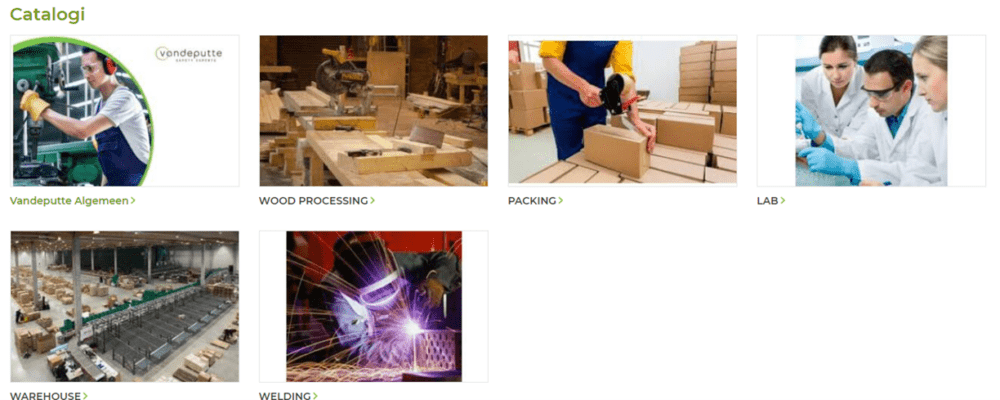
Updated on 31/07/2024
Choosing the correct Personal Protective Equipment (PPE) for every potential risk within your organisation can be a challenge. Although the huge amount of legislation and extensive range of products are necessary, their complexity can be overwhelming.
There are six ways to help your employees understand what PPE they need to wear in each work situation.
- Create a PPE matrix
- Hold a toolbox meeting or training session
- Organise a safety day
- Create visual posters
- Use a management platform
- Install distribution machines
#1: Create a PPE matrix
A PPE matrix is a schematic overview of the PPE that your employees must wear for specific jobs. Make the diagram even clearer by adding pictures to make products instantly recognisable. The information can also be linked to your supplier's online product information, ensuring that an up-to-date version is always available.

#2: Hold a toolbox meeting or training session
During a toolbox meeting, a team leader speaks to their team for 10 minutes about the specific risks in the workplace and the required PPE. Keep the meeting short and concise by focusing on one topic, and make the training practical by linking it to the real-life work environment. Teach your employees to identify the key symbols on PPE that relate to the risks in their workplace.

But what if you have no experience in conducting toolbox meetings and need some help with this? Our partner Samurai at Work has extensive experience, and can help your organisation set up efficient toolbox meetings.
Vandeputte offers courses on a variety of topics.
#3: Organise a safety day
A Safety Day offers workshops in which employees engage with safety in a creative and interactive way. In one of the workshops, you can take a practical look at how PPE protects against the main risks in your company, for example via working at height demonstrations or presentations of new technologies.
It may be beneficial to invite your suppliers to present their Personal Protective Equipment (PPE) package during the Safety Day.
#4: Creat visual posters
A picture is worth a thousand words. Create posters with short sentences and uncomplicated symbols to indicate what the PPE must be used for and which risks they protect against. Display the posters prominently and clearly so that staff can make an informed choice. Create different posters for each department or workstation based on your PPE matrix.

#5: Use a management platform
PPE management platforms, such as vdp.com, help you to structure your safety policy. Prepare product ranges and create specific catalogues. This allows you to link products to a business unit, department, job or risk. Provide your staff with access to the platform so that they can identify the correct protection for their work within the range of products you have defined. You decide, by user type, which catalogues are visible and which employees can order products online.

Add tips to the products from your own range in different languages and have online orders approved by an authorised person to verify that the correct products are being ordered. You can manage and administer this for your organisation via vdp.com. Interested?

#6: Install distribution machines

PPE vending machines are invaluable when dealing with a fast turnover of PPE. Employees can simply log in and collect the products made available to them. Use an online app to manage the available products for each individual employee and link this to the annual budgets. This system:
- Provides insight into the use of all products per employee
- Ensures employees can use only the relevant PPE
PPE vending machines help ensure correct use of PPE by displaying pop-ups with usage tips, and by asking security questions when products are being collected. They can also display short safety videos or PowerPoint presentations when not in use. Certain products, such as fall protection and gas detection, can be issued subject to valid user certificates.
Conclusion
These six tips will keep your employees up-to-date with the latest information on the PPE available and its use in the workplace. Start on a small scale with toolbox meetings and creative posters, and in the meantime find a management platform that suits your organisation.
Some rules of thumb:
- Keep posters or diagrams visual and attractive
- Make training courses very practical and focus on one topic
- For a long-term structured solution, use a PPE management platform or a PPE vending machine
Need help instructing your employees?
Do you want to encourage your employees to use PPE correctly and effectively? We are happy to help you find the most suitable solution. Contact us for an obligation-free appointment.
